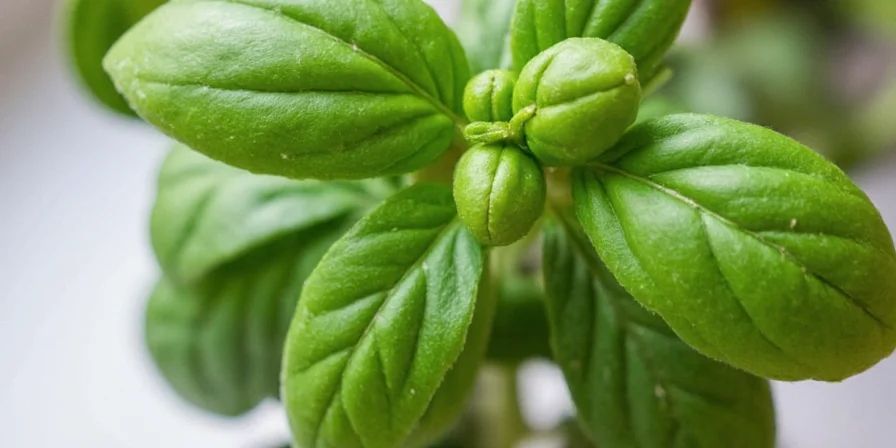The Spanish word for basil is albahaca (pronounced al-ba-HA-ka). This is the immediate answer for anyone searching for the translation. However, understanding how this term functions across different Spanish-speaking regions is crucial for accurate culinary application.

Why "Albahaca" Isn't Always Basil: Regional Translation Guide
While albahaca is the standard Spanish translation for basil, its meaning varies significantly across Spanish-speaking countries. This regional variation causes confusion for cooks, travelers, and language learners. Here's what you need to know:
- Spain, Argentina, Colombia: Refers exclusively to sweet basil (Ocimum basilicum)
- Mexico, Central America: Often refers to culantro or hoja santa instead of true basil
- Caribbean islands: Typically means sweet basil but sometimes includes culantro
Essential Regional Reference Chart
| Term | Actual Plant | Primary Regions | Use This When You Want... |
|---|---|---|---|
| Albahaca | Sweet basil (Ocimum basilicum) | Spain, Argentina, Colombia | Italian dishes, pesto, caprese |
| Albahaca/Culantro | Eryngium foetidum (Sawtooth coriander) | Mexico, Puerto Rico, Dominican Republic | Caribbean soups, salsas, stews |
| Hoja Santa | Piper auritum | Mexico | Mole verde, tamales, fish dishes |

How to Get the Right Herb Every Time
Avoid kitchen disasters with these practical identification tips:
- Request specific varieties: Ask for "albahaca italiana" or "albahaca dulce" in Spain/Latin America. In Mexico, specifically request "albahaca tipo genovés"
- Visual identification: True basil has rounded leaves with smooth edges; culantro has long, serrated leaves; hoja santa is large with heart-shaped leaves
- Smell test: Sweet basil has a sweet-peppery aroma; culantro has a sharper, citrusy scent; hoja santa smells like licorice
- For authentic pesto: Only use sweet basil (Ocimum basilicum) - culantro creates an entirely different flavor profile
- When substituting: Culantro withstands cooking better than sweet basil; add sweet basil at the end of cooking to preserve flavor

Regional Terminology Explained
This linguistic variation developed from historical necessity. Spanish colonists applied the term "albahaca" to indigenous plants with similar aromatic properties to Mediterranean basil. In Mexico specifically, this led to multiple plants sharing the same culinary designation based on sensory similarity rather than botanical accuracy.
Quick Flavor Reference
| Herb | Flavor Profile | Best Dishes |
|---|---|---|
| Sweet Basil (Spain) | Sweet, peppery, floral | Pasta, pizza, pesto |
| Culantro (Mexico) | Strong, citrusy, soapy notes | Caribbean soups, stews |
| Hoja Santa (Mexico) | Anise/licorice flavor | Mole verde, tamales |

Common Translation Mistakes to Avoid
Mistake: Assuming "albahaca" means the same plant everywhere
Solution: Verify the specific plant based on regional context
Mistake: Using Mexican "albahaca" (often culantro) in Italian pesto
Solution: Only use sweet basil for authentic pesto recipes
Mistake: Translating Spanish recipes literally without understanding regional terms
Solution: Research the specific regional cuisine when adapting recipes

FAQ: Quick Answers to Common Questions
What is basil called in Spanish?
The standard Spanish word for basil is albahaca (pronounced al-ba-HA-ka). However, this term refers to different plants depending on the region.
Why does Mexico use "albahaca" for non-basil herbs?
Spanish colonists applied "albahaca" to indigenous plants with similar aromatic properties to Mediterranean basil, creating functional equivalents based on sensory experience rather than botanical accuracy. This historical adaptation persists in Mexican culinary terminology.
Can I substitute culantro for sweet basil?
Only in specific dishes. Culantro has stronger, more persistent flavor compounds that work well in cooked applications like soups and stews, but will ruin delicate dishes like pesto that require sweet basil's floral notes.











 浙公网安备
33010002000092号
浙公网安备
33010002000092号 浙B2-20120091-4
浙B2-20120091-4